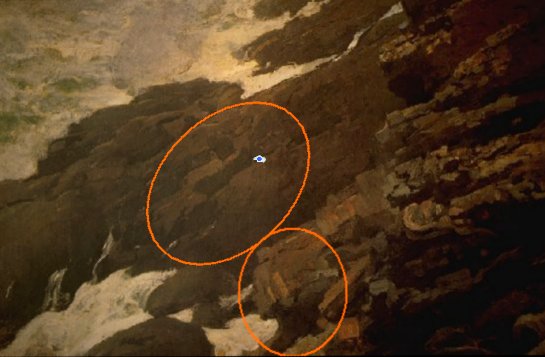
I colored the eyeball to make this image easier to see. This one is more difficult and since it is a more abstract representation of the "lookout," as evidence of intention it is weak.
Without Homer's "lookout" drawing and painting, this image would be even less usefull as evidence that Homer perceived and then intentionally painted this man. Even though it is sufficiently similiar to the form of the man in the lookout drawing and painting such that it is a match, it is not as useful because the chronological sequence is backwards. The lookout drawing and painting came after this painting.